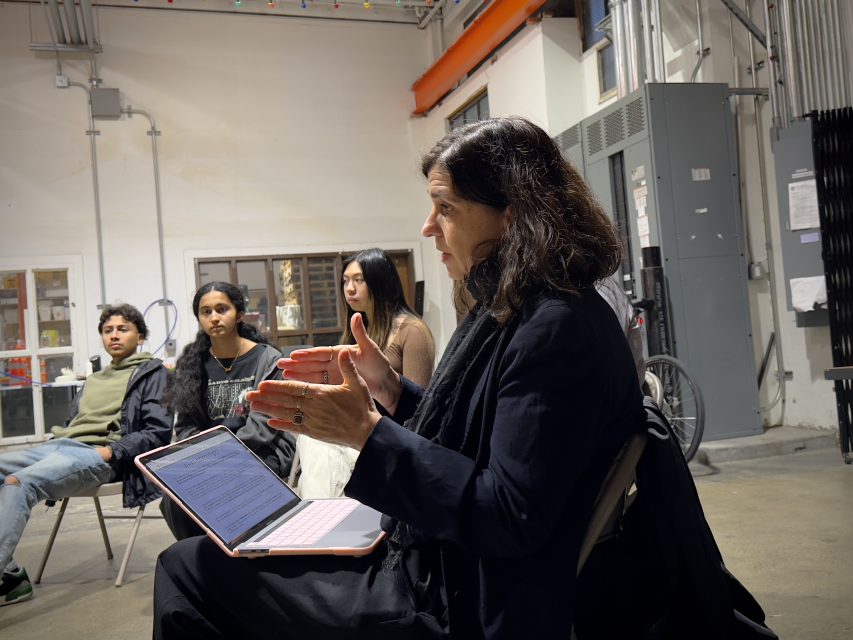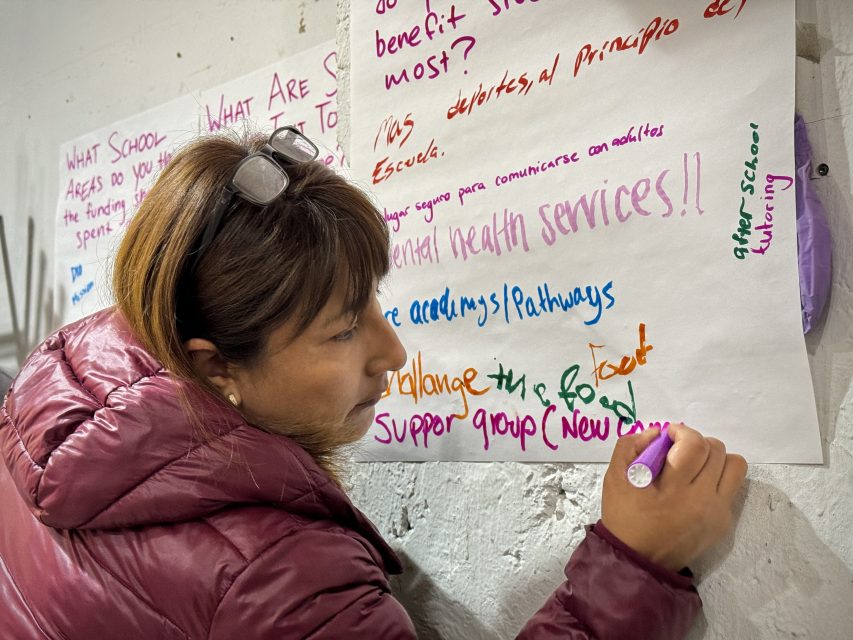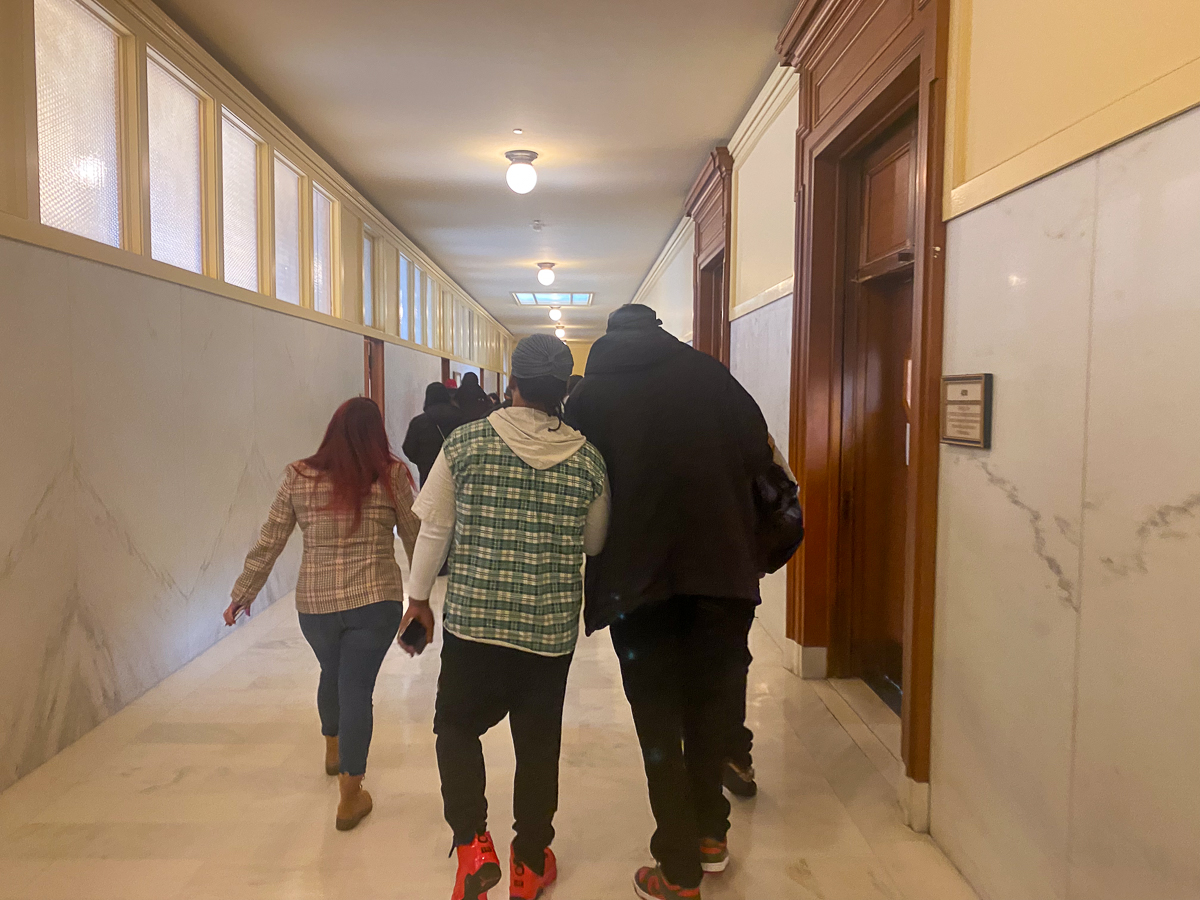When their schools get as much as $1 million a year in new funding, what improvements would students like to see? Better food.
“Anything that people love. Simple french fries, chicken tenders,” said Alex, a fifth-grader at Sanchez Elementary School. “Now, it’s all just kind of the same food.”
Alex was in a group of some 25 students, parents and teachers from Districts 9 and 11 who met Thursday afternoon at 701 Alabama St. to discuss what students want from the new funding that will be distributed from the city’s Student Success Fund. Voters approved that measure in November 2022.
After better school food came requests for more tutors, after-school programs, multi-language support for immigrant students, and mental health services.
The fund could eventually provide each school with up to $1 million per year for 15 years to achieve two goals: Scademic success, and social and emotional wellness for students.
The Thursday student listening session, the second of the citywide listening sessions organized by the Youth Commission, kicked off around 5 p.m. with a presentation by Jennifer Ferrigno, legislative aide to Supervisor Hillary Ronen.
For the first fiscal year 2023-2024, the city will place $11 million in the Student Success Fund, $35 million in the second year, $45 million in the third year and $60 million in the fourth year, Ferrigno said.

Students on Thursday were interested in the immediate.
“Monday pasta, next Monday pasta, and next Monday pasta,” Henry, 15, complained in Spanish, which his after-school instructor, Jenny Morales, translated. Henry said he wanted burritos at lunch. Brean and Alan, also Spanish-speaking students at San Francisco International High School, and Morales, agreed.
“Food is part of our community. We share love when prepare food and make some connections,” Morales added.
Brean said he also wanted more Spanish-speaking tutors at the library. Sometimes his school only has two tutors, and other times the tutors don’t speak Spanish, he said.
“When the tutors don’t speak Spanish, students leave,” Morales added.

Besides food, students also crave more after-school activities.
Brean, for instance, wants variety in school activities beyond the soccer and volleyball offered at his school now. He is particularly interested in self-defense programs, and didn’t hesitate to demonstrate some cool moves.
Imaan Ansari, Youth Commissioner for District 11 and a junior in Lowell High School’s journalism program, said schools in Districts 9 and 11 are “disadvantaged and felt left out,” with the biggest disparity in visual and performing arts classes.
“When funding gets low, the first thing to get cut is the visual and performing arts classes,” said Ansari, who loves photography. “Those classes are so important for students because they encourage self-expression, and it’s such a huge part of who those students are.”
Skylar Dang, the District 9 youth commissioner who attends Balboa High School, said such activities can help steer students away from acts of violence after school.

The fund will be administered by the Department of Children, Youth, and their Families and the San Francisco Unified School District. An advisory council, with five appointed seats and eight at-large seats filled through an application process, will review applications for the grants and provide oversight.
Members of the council will be announced by the end of this week, and its first meeting is slated for December.
The first year’s fund will prioritize “crisis and emergency needs” from schools, with the amount limited to $25,000 per school. Applications for the “rapid response fund” will open in the next few weeks, according to Joy Zhan, a Youth Commission specialist.
The $11 million distributed in the fund’s first year will also include funds to get schools ready for applying and implementing future grants by hiring a community school coordinator and providing technical assistance. Applications for this readiness fund will open in December.
Joseph Duhart, a recent high school graduate who is now an intern for the Latino Task Force that hosted the discussion, said he missed his high school years a lot.
“There was a lot of support,” Duhart said. “But at the same time, they always need more.”





U.S. should adopt Japan’s school lunch ways.
They should serve students Popeyes Chicken . Not ever meal or anything like that . Eating fried food all the time no bueno … good for a treat in moderation . Not easy being a kid these days with Covid and everything . Maybe like twice a week if they behave and wear mask .